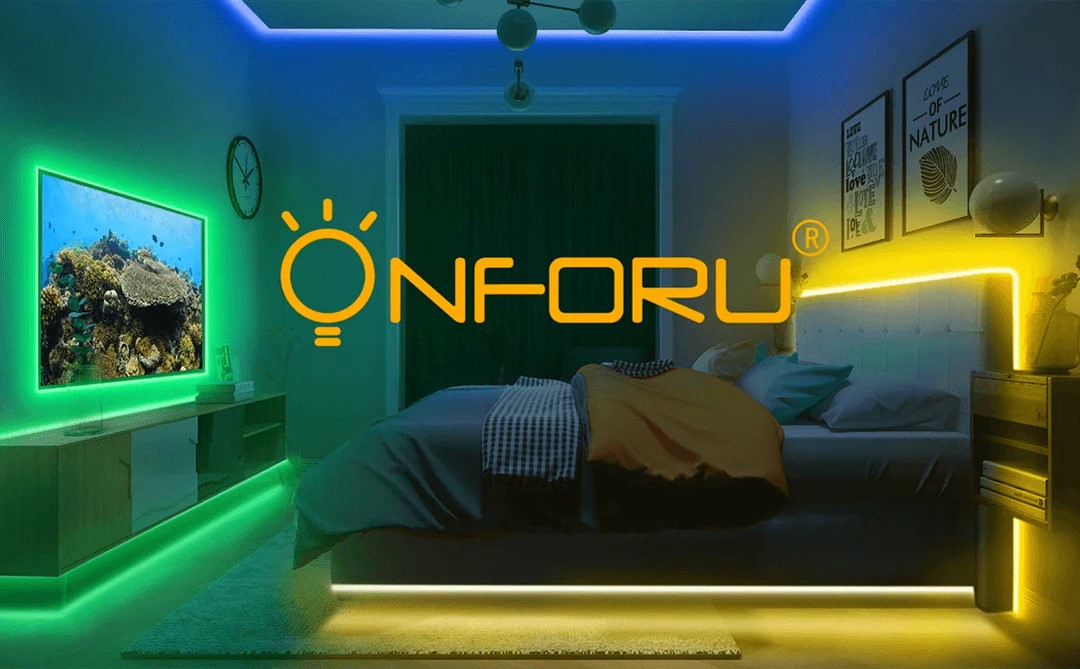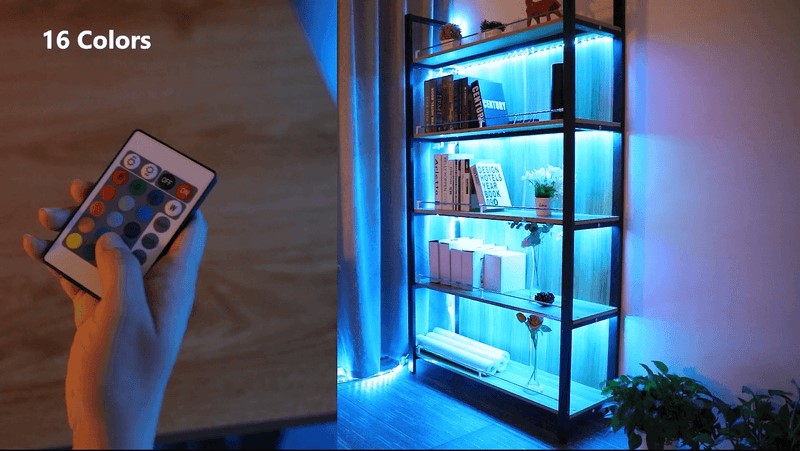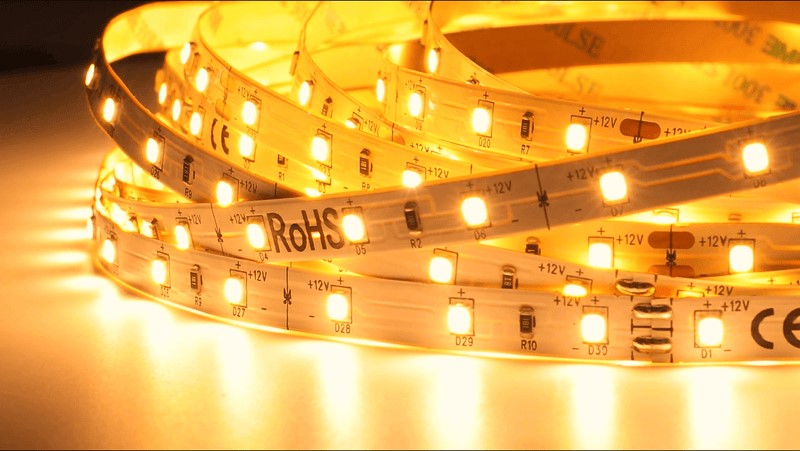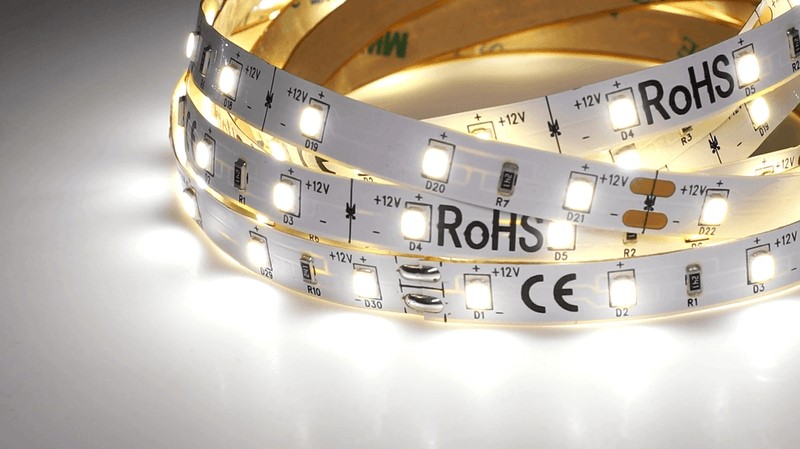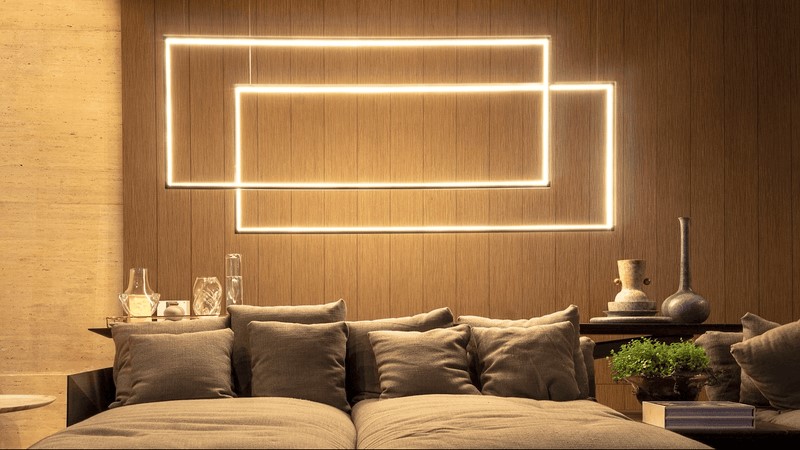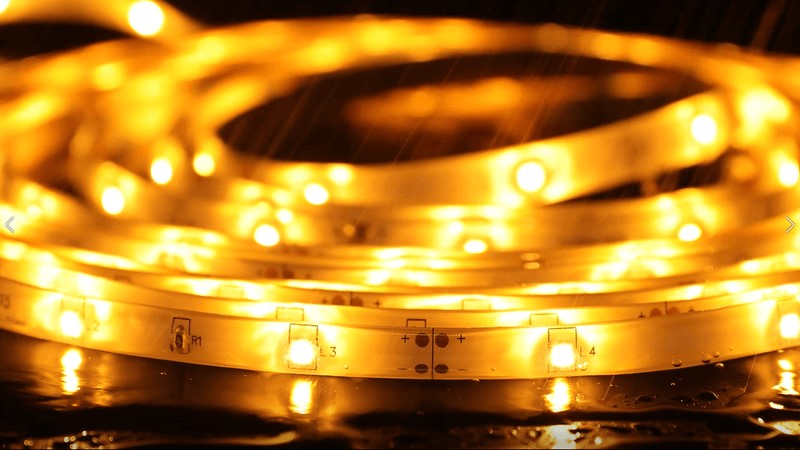As a common home improvement, LED strip lights are assembled on the flexible circuit board or PCB hard board, which is named because of its product shape like a strip. Because of the long service life (generally normal life of 80,000 to 100,000 hours), but also very energy-efficient and green and gradually in a variety of decorative industry to emerge.
Read on to learn more about the various types of LED strips and how to buy the right one.
Factors to Consider When Buying LED Strip Lights
Colors: What colors do led strip lights come in?
There are several types of LED light bars available in the market. Most will choose to go for RGB LED strips because these can be used to create a wide spectrum of colors such as red, green, blue, purple, orange, cyan and white. These LED light strips can produce a natural light sources.
Sometimes LED strips are purchased with a remote control that allows you to change the color from a distance, and of course there are regular color strips or smart adjustable strips.
Lumens: How many lumens is a strip light?
The brightness of LED strips is usually expressed in lumens per foot (or meter). A good quality LED strip should provide at least 450 lumens per foot (1500 lumens per meter).
LED strip brightness is determined by three main factors:
- Light output and efficiency of each LED emitter
- Number of LEDs per foot
- Power consumption per foot of LED strip
LED strips that do not have lumen brightness specifications are red flags. You also need to be aware of low-cost LED strips that claim high lumens because they can drive the LEDs into overdrive to the point of premature failure.
Wattage: What is the best wattage for LED strip lights?
Make sure the total wattage of your LED strip is at least 20% less than the power supply’s wattage rating. For example, if you have an LED light bar that requires an 80 watt power supply to run, you need a power supply that is rated at least 96 watts.
Voltage: What is the best voltage for LED strip lights?
If you are installing a low-end wattage LED light, then a 12V would be ideal.
Price: How much do strip LED lights cost?
When purchasing LED strips individually, your costs can range from about $20 to over $50 per strip, depending on color, length, etc.
Type: What are the different types of led strip light?
1. Flexible LED Tape Light
These are LED lights mounted on flexible PCBs that allow them to bend in any direction and any shape without damaging anything inside. LED strips are the most common LED strips on the market because they are in such high demand. They are mainly used for commercial signage.
At home, you will find them mounted on cabinets, stairs and walls. They are also suitable for automobiles, especially in interiors. Professional photographers also use them extensively for ring lights.
2. Rigid LED Bar Lights
These are the opposite of flexible strips. They are a series of LEDs placed on a rigid aluminum substrate PCB. They are protected by an aluminum housing, which makes them very rigid and cannot be bent around the surface. They are waterproof and work well when installed in outdoor spaces.
Rigid LED strip lights can be mounted with mounting clips and can even be hung on any hanging hook. Although they are not flexible, they do work well if all you need is a strategic light source that doesn’t require much movement.
3. White LED Strips
White lighting is the most common type of lighting you will encounter in many locations and homes. There are three versions of white LED strips commonly used for this purpose.
- Warm White:This is often used in homes as accent lighting in cabinets, closets, bathrooms or under beds in bedrooms. It is best suited for these locations because they give the room a warm, cozy feeling, a soft, inviting atmosphere that permeates the entire house. The color temperature of warm white ranges from 3000K-5000K.
- Cool white:This light has a futuristic tone between blue and white. You need this when you want to highlight a specific point in the house or premises. This is the type of light you’ll find in jewelry stores because it makes gemstones shine more – cool white has a color temperature range of between 12,000K-14,000. Super high brightness accent lighting.
- Neutral white:This is the light color closest to pure white; there are no yellow or blue tones in it. It is the ideal light to use in the home for general lighting, as it gives the room a modern color and a sophisticated and elegant look. It is almost similar to a fluorescent lamp. The color temperature neutral white range is between 8000K-9000K.
4. Silicone Neon Strip Lights
This is the type of light that is placed inside a clear silicone material that is not only flexible, but allows the glow of light to pass through a filter to produce very colored strings of light.
What makes it better than a flexible tape light is that the silicone is waterproof. This allows it to be installed on any surface; you can even install it underwater in a swimming pool and turn it into a treasure trove of colorful lights.
Silicone LED lights can be up to 120m long and are available in a variety of colors depending on the occasion or function you intend to use them for.
Power consumption: How much electricity does a LED light strip use?
In general, LED lights consume very little power. For a lighting level of 450 lumens, an LED bulb requires only 4-5 watts, while an incandescent bulb requires 40 watts. For LED strips, the answer depends on the length of the strip.
Features: What are good things about LED Strip Lights?
An LED strip is a long circuit board with surface mounted light emitting diodes (SMD LEDs) that can give a warm glow to any room. Also known as LED strips or strip lights, these strips usually have an adhesive backing for easy installation.
Power source: What power source do LED strip lights use?
When it comes to installation and setup, LED strips are not as simple as traditional incandescent bulbs. Because they operate at low voltage DC, they require a power supply device that converts 120V/240V AC (depending on your location) into a voltage signal that LED strips can use.
CRI: What is a good CRI rating for LED lights?
The color rendering index is important when choosing an LED strip. It is basically a lighting aspect that helps you determine how good the output will be when turned on. The metric used starts at 0 and goes all the way up to 100; the higher the number, the better the color rendering index, representing the higher quality of the LED strip. The closer it is to 100, the truer the natural colors will look in this light.
If you like everything in high color, then choose an LED strip with a CRI score of 80 and above.
Water-Resistance: What should be the waterproof level of the light strip
Water resistance determines where LED strips are installed. LED strips are graded according to a standard called Ingress Protection, which is the industry standard for determining the waterproof rating of LEDs. Three levels are involved and they include the following.
IP33: This is the lowest rating, which means that LED strips do not have any waterproofing properties and should be used in waterproof and dust-free areas such as bedrooms and living rooms.
IP65: This is a coated strip that can handle a certain level of water, possibly a little fur and some dust. It is resistant enough to the elements that it will not become brittle too quickly.
IP67: This is the waterproof rating. LED strips with this rating have a very nice coating and can be used outdoors in areas that may be hit by water and dust. They are perfect for bathrooms, kitchens and any other areas where water and dust are common.
Density: Are LED strip lights bright enough?
LED strips are available in two densities; standard density strips with 30 LEDs per strip and high density types with 60 LEDs per strip. This translates to 9 LEDs per foot and 18 LEDs per foot respectively. The higher the density, the brighter the strip and vice versa.
Typically, standard density strips are used for accent lighting and in tight spaces where not much light is needed. High density LEDs are suitable for outdoor lighting or for rooms with more space.
Conclusion
Now that you know a little bit about LED strip lighting , buying an LED strip is not that complicated. Remember, you don’t have to limit yourself to one LED strip. You can install more than one around your patio or barbecue deck to create a very beautiful, high brightness atmosphere at a low price.
